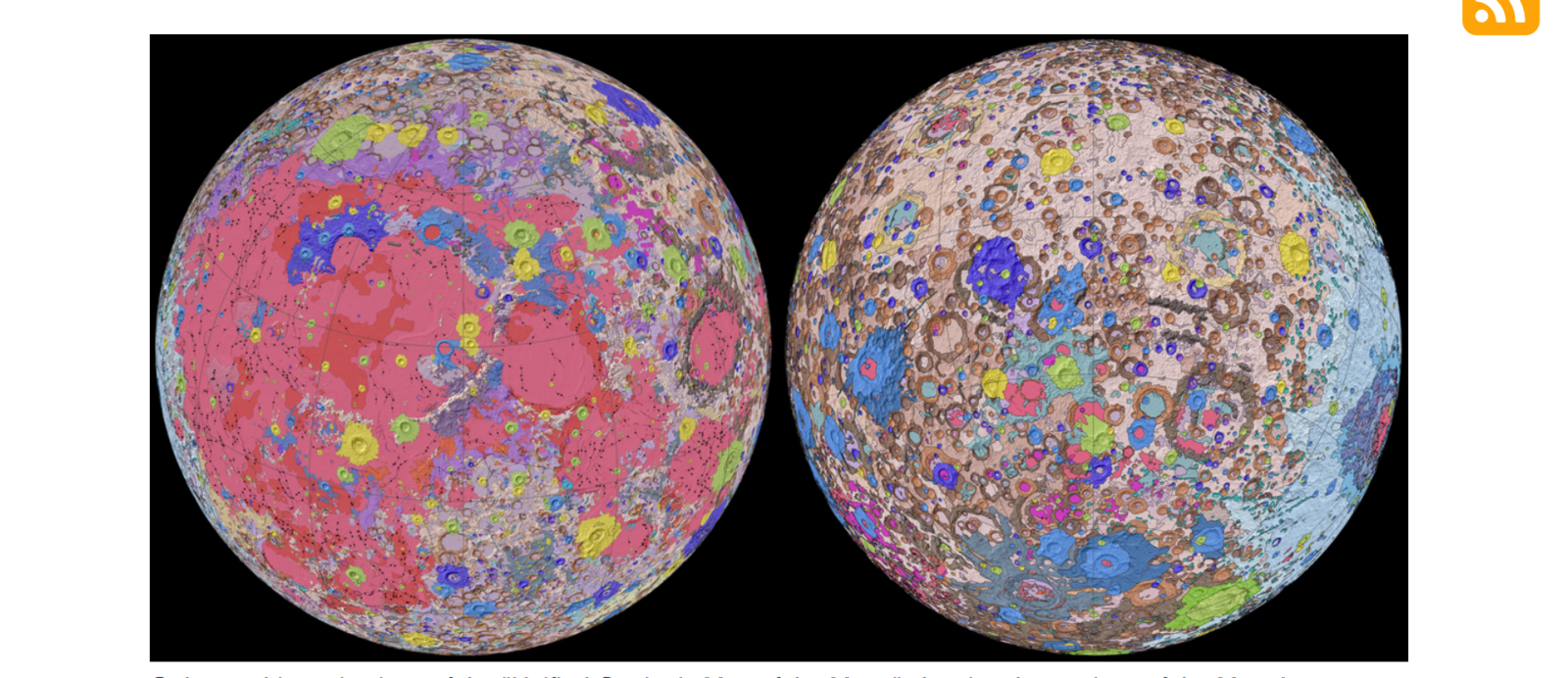883: 2/2 Turning Dust to Gold: Building a Future on the Moon and Mars, by Haym Benaroya. Springer Praxis Books

Orthographic projections of the "Unified Geologic Map of the Moon" showing the geology of the Moon’s near side (left) and far side (right) with shaded topography from the Lunar Orbiter Laser Altimeter (LOLA). This geologic map is a synthesis of six Apollo-era regional geologic maps, updated based on data from recent satellite missions. It will serve as a reference for lunar science and future human missions to the Moon. Credit: NASA/GSFC/USGS. Turning Dust to Gold: Building a Future on the Moon and Mars, by Haym Benaroya (https://www.amazon.com/Haym-Benaroya/e/B001HPZRNW/ref=dp_byline_cont_ebooks_1) . Springer Praxis Books Two important factors have given rise to mankind's successful evolution into space: the first is that the possibilities are bounded only by our imaginations—if we can conceive it, historically, it has been proven that we can do it, and on a predetermined timescale. The second factor is recognition of the evolving civilizations on the Moon and Mars as separate entities from Earth. Space, whether we or our children live in it or on the Moon or Mars, will be important to all of us, not only to aerospace engineers and cosmologists, because of the new opportunities for freedom and limitless growth it offers. Our continued prosperity and survival as a species will in part depend upon space exploration and the resources it provides for our industrial societies and for the markets it will create. The expansion of Earth's success in science and culture to the Moon, then Mars, and eventually the Solar System, can only strengthen mankind's core positive achievements: democracy, individual rights and equal opportunities for all. The significant topic of returning to the Moon, this time to stay, is a central part of space exploration. Concepts for lunar base structures have been proposed since long before the dawn of the space age. Suggestions made during the last 25 years are likely to form the pool from which eventual lunar base designs will evolve. Studies have intensified, both within NASA and outside national governments in industry and academe, since the days of the Apollo program, when it appeared likely that the Moon would become a second home to humans. Since then, science on the Moon, the economics of lunar development, and human physiology in space and on planetary bodies, as well as related policy issues, have been studied as they are all needed to plant Man on the Moon in a sustainable and viable way. This book is written as a history book in the year 2169—200 years since the first men walked on the Moon. It presents a possible path for mankind as it becomes a spacefaring civilization. All aspects of what we need to do and what are the obstacles are covered. Human physiology and psychology; engineering and science. Also 19 interviews with key players, including Neil Armstrong. Accessible to all with a basic education. No Ph.D, required! A vision of our possible future. https://www.amazon.com/Turning-Dust-Gold-Building-Springer-ebook-dp-B01JAIHH2Q/dp/B01JAIHH2Q/ref=mt_other?_encoding=UTF8&me=&qid=1608582301